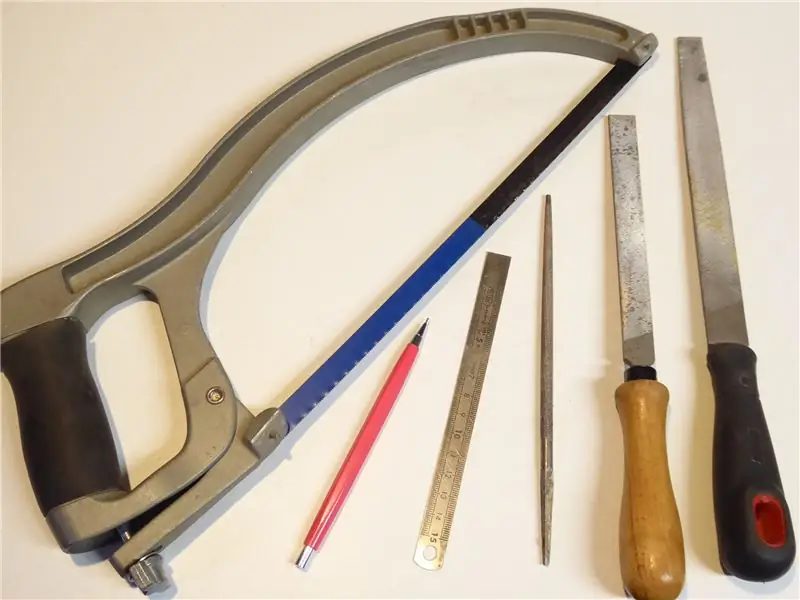
Tabla de contenido:
- Autor John Day [email protected].
- Public 2024-01-30 08:40.
- Última modificación 2025-01-23 14:39.
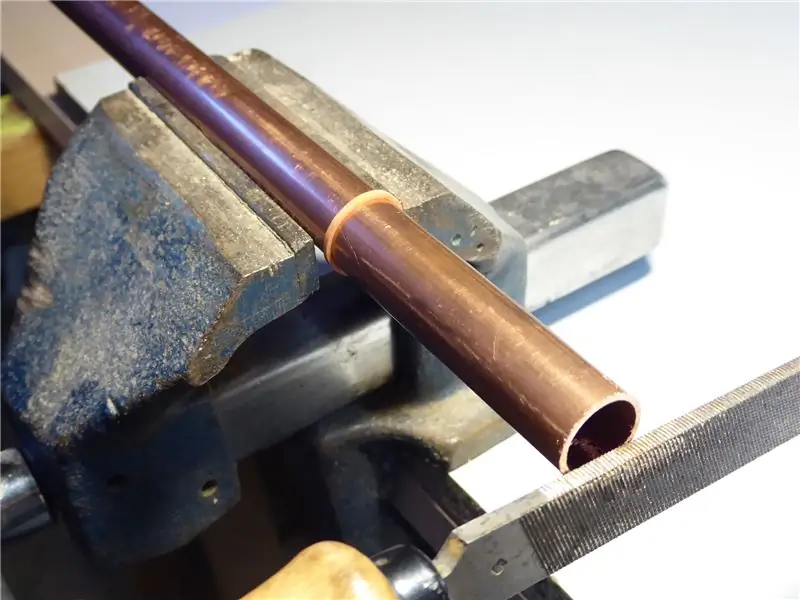
En este instructivo, vamos a construir un proyecto IOT simple en el que obtendremos los datos meteorológicos de nuestra ciudad de openweather.com/api y los mostraremos usando el software Processing.
Suministros:
- Arduino
- ESP8266 o cualquier otro módulo esp
- IDE de Arduino
- Software de procesamiento
- Tablero de circuitos
- Cables de puente macho a macho y macho a hembra
Paso 1: Obtenga la clave API y la URL de Openweather.org

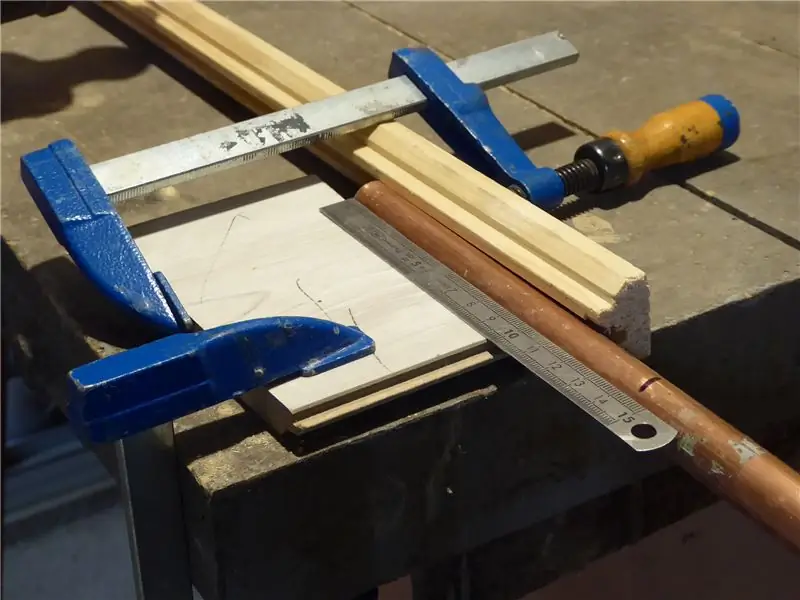
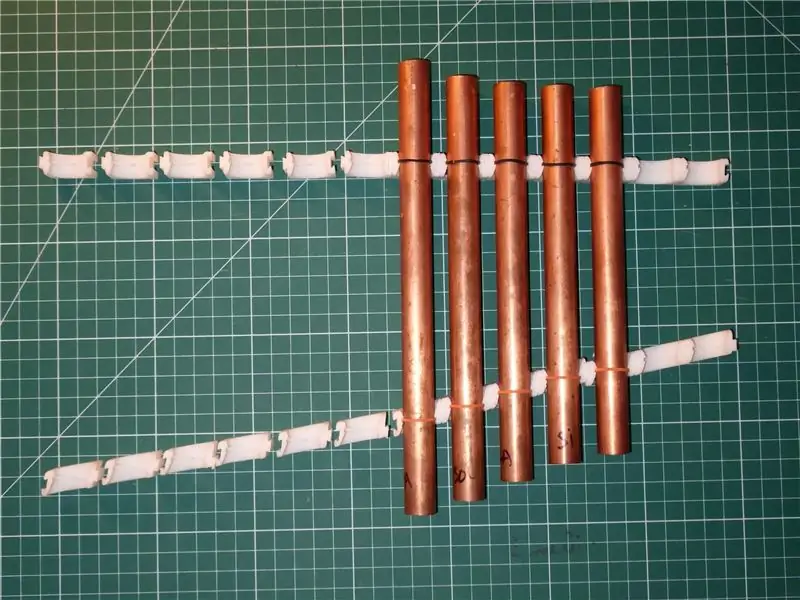
- Crear cuenta en https://openweathermap.org (Imagen 1)
- Después de iniciar sesión, vaya a las claves API y obtendrá la clave API como se muestra en la imagen. (Imagen 2)
- Copie la clave API y guárdela en un archivo de bloc de notas (Imagen 3)
- Vaya a la opción API (Imagen 4)
- Vaya a la opción de documento API como se muestra en la imagen (Imagen 5)
- Copie la URL de y que se muestra y guárdela en un archivo de bloc de notas (Imagen 6)
Paso 2: diagrama de conexión
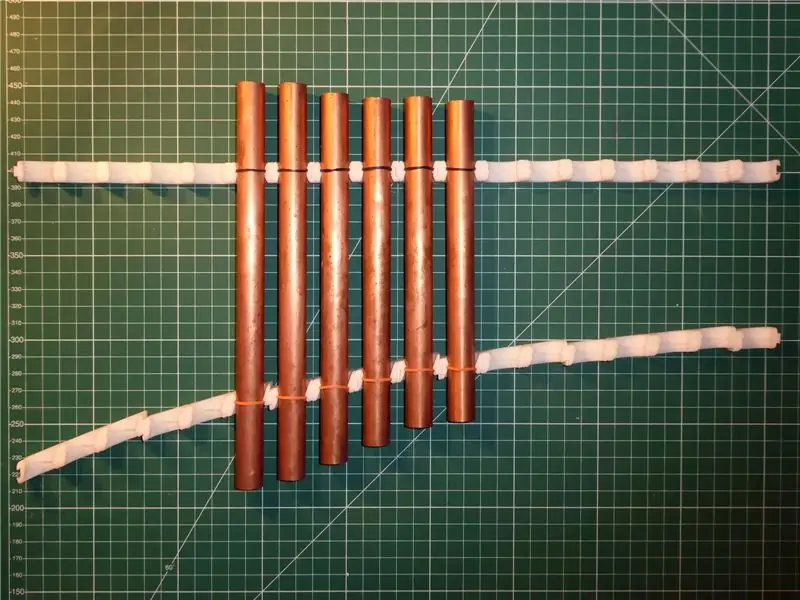
Paso 3: Código Arduino
Antes de copiar este código en Arduino, asegúrese de haber descargado la placa ESP8266 en arduino ide usando Boards Manager.
#incluir
#include #include #include const char * ssid = "Su SSID"; const char * password = "Your SSID PASSWORD"; // Su nombre de dominio con ruta URL o dirección IP con ruta String openWeatherMapApiKey = "Pegue su clave API aquí"; // Reemplace con su código de país y ciudad String city = "Mumbai"; String countryCode = "IN"; Datos de cadena [16]; // EL TEMPORIZADOR POR DEFECTO ESTA A 10 SEGUNDOS PARA PROPÓSITOS DE PRUEBA // Para una aplicación final, verifique los límites de llamadas de API por hora / minuto para evitar ser bloqueados / prohibidos unsigned long lastTime = 0; // Temporizador establecido en 10 minutos (600000) // Temporizador largo sin firmarDelay = 600000; // Establece el temporizador en 10 segundos (10000) unsigned long timerDelay = 10000; String jsonBuffer; configuración vacía () {Serial.begin (115200); WiFi.begin (ssid, contraseña); //Serial.println("Connecting "); while (WiFi.status ()! = WL_CONNECTED) {retraso (500); // Serial.print ("."); } // Serial.println (""); // Serial.print ("Conectado a la red WiFi con dirección IP:"); // Serial.println (WiFi.localIP ()); // // Serial.println ("Temporizador establecido en 10 segundos (variable timerDelay), tomará 10 segundos antes de publicar la primera lectura."); } void loop () {// Envía una solicitud HTTP GET if ((millis () - lastTime)> timerDelay) {// Verifica el estado de la conexión WiFi if (WiFi.status () == WL_CONNECTED) {String serverPath = "https://api.openweathermap.org/data/2.5/weather?q= "+ ciudad +", "+ countryCode +" & APPID = "+" d5b56fd07988143ae141503ed9d81742 "+" & units = metric "; jsonBuffer = httpGETRequest (ruta del servidor.c_str ()); //Serial.println(jsonBuffer); JSONVar myObject = JSON.parse (jsonBuffer); // JSON.typeof (jsonVar) se puede usar para obtener el tipo de var if (JSON.typeof (myObject) == "undefined") {//Serial.println("Parsing input failed! "); regreso; } // Serial.print ("Objeto JSON ="); // Serial.println (myObject); // Serial.print ("Temperatura:"); // Serial.println (myObject ["principal"] ["temp"]); // Serial.print ("Presión:"); // Serial.println (myObject ["principal"] ["presión"]); // Serial.print ("Humedad:"); // Serial.println (myObject ["principal"] ["humedad"]); // Serial.print ("Velocidad del viento:"); // Serial.println (myObject ["viento"] ["velocidad"]); int temp = myObject ["principal"] ["temp"]; long pres = myObject ["principal"] ["presión"]; int húmedo = miObjeto ["principal"] ["humedad"]; int viento = miObjeto ["viento"] ["velocidad"]; Cadena país = JSON.stringify (myObject ["sys"] ["país"]); String city1 = JSON.stringify (myObject ["nombre"]); Cadena weather = JSON.stringify (myObject ["weather"] [0] ["description"]); String icon = JSON.stringify (myObject ["weather"] [0] ["icon"]); datos [0] = Cadena (temp); datos [1] = "/"; datos [2] = Cadena (pres); datos [3] = "/"; datos [4] = String (húmedo); datos [5] = "/"; datos [6] = String (viento); datos [7] = "/"; datos [8] = país; datos [9] = "/"; datos [10] = ciudad1; datos [11] = "/"; datos [12] = clima; datos [13] = "/"; datos [14] = icono; datos [15] = "\ n"; for (int i = 0; i0) {// Serial.print ("Código de respuesta HTTP:"); // Serial.println (httpResponseCode); payload = http.getString (); } else {Serial.print ("Código de error:"); Serial.println (httpResponseCode); } // Recursos gratuitos http.end (); devolver la carga útil; }
Paso 4: Código de procesamiento

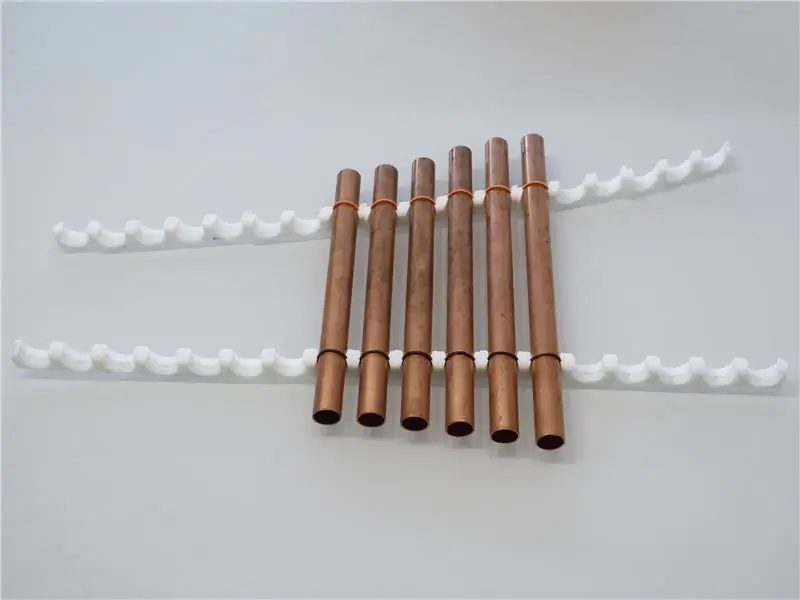

Antes de ejecutar este código, descargue las imágenes de iconos dadas que se utilizarán para mostrar el clima. Y mantenga las imágenes y el código en la misma carpeta.
procesamiento de importación.serie. *;
Serial myPort; PImage img; PImage img2; PImage img3; PImage img4; PImage img5; PImage img6; PImage img7; PImage img8; PImage img9; PImage img10; PImage img11; PImage img12; PImage img13; PImage img14; PImage img15; PImage img16; PImage img17; PImage img18; int temp; int pres; int húmedo; viento int; Cadena ciudad = ""; Cadena país = ""; String weather = ""; Icono de cadena = ""; configuración vacía () {tamaño (500, 500); myPort = new Serial (este, "COM3", 115200); img = loadImage ("01d.png"); img2 = loadImage ("01n.png"); img3 = loadImage ("02d.png"); img4 = loadImage ("02n.png"); img5 = loadImage ("03d.png"); img6 = loadImage ("03n.png"); img7 = loadImage ("04d.png"); img8 = loadImage ("04n.png"); img9 = loadImage ("09d.png"); img10 = loadImage ("09n.png"); img11 = loadImage ("10d.png"); img12 = loadImage ("10n.png"); img13 = loadImage ("11d.png"); img14 = loadImage ("11n.png"); img15 = loadImage ("13d.png"); img16 = loadImage ("13n.png"); img17 = loadImage ("50d.png"); img18 = loadImage ("50n.png"); } vacío dibujar () {fondo (72, 209, 204); textSize (22); llenar (54, 69, 79); texto ("Temperatura:", 25, 100); texto (temp + "° C", 200, 100); texto ("Presión:", 25, 150); texto (pres + "hpa", 200, 150); texto ("Humedad:", 25, 200); texto (húmedo + "%", 200, 200); texto ("Viento:", 25, 250); texto (viento + "m / s", 200, 250); texto ("País / Ciudad:", 25, 300); texto (país + "-" + ciudad, 200, 300); texto ("Clima:", 25, 350); texto (clima, 200, 350); if (icon.contains ("01d")) {imagen (img, 380, 15); } else if (icon.contains ("01n")) {imagen (img2, 380, 15); } else if (icon.contains ("02d")) {imagen (img3, 380, 15); } else if (icon.contains ("02n")) {imagen (img4, 380, 15); } else if (icon.contains ("03d")) {imagen (img5, 380, 15); } else if (icon.contains ("03n")) {imagen (img6, 380, 15); } else if (icon.contains ("04d")) {imagen (img7, 380, 15); } else if (icon.contains ("04n")) {imagen (img8, 380, 15); } else if (icon.contains ("09d")) {imagen (img9, 380, 15); } else if (icon.contains ("09n")) {imagen (img10, 380, 15); } else if (icon.contains ("10d")) {imagen (img11, 380, 15); } else if (icon.contains ("10n")) {imagen (img12, 380, 15); } else if (icon.contains ("11d")) {imagen (img13, 380, 15); } else if (icon.contains ("11n")) {imagen (img14, 380, 15); } más si (icono == "13d") {imagen (img15, 380, 15); } else if (icon.contains ("13n")) {imagen (img16, 380, 15); } else if (icon.contains ("50d")) {imagen (img17, 380, 15); } else if (icon.contains ("50n")) {imagen (img18, 380, 15); }} void serialEvent (Serial myPort) {if (myPort.available ()> 0) {String data = myPort.readStringUntil ('\ n'); if (datos! = nulo) {datos = recortar (datos); Elementos de cadena = dividir (datos, '/'); if (items.length> 1) {temp = int (items [0]); pres = int (elementos [1]); húmedo = int (elementos [2]); viento = int (elementos [3]); ciudad = elementos [4].replace ("\" "," "); país = elementos [5].replace (" / "", ""); clima = elementos [6].replace ("\" "," "); icono = elementos [7].replace (" / "", ""); }}}}
Recomendado:
ESP32 Xiaomi Hack - Obtenga datos de forma inalámbrica: 6 pasos (con imágenes)
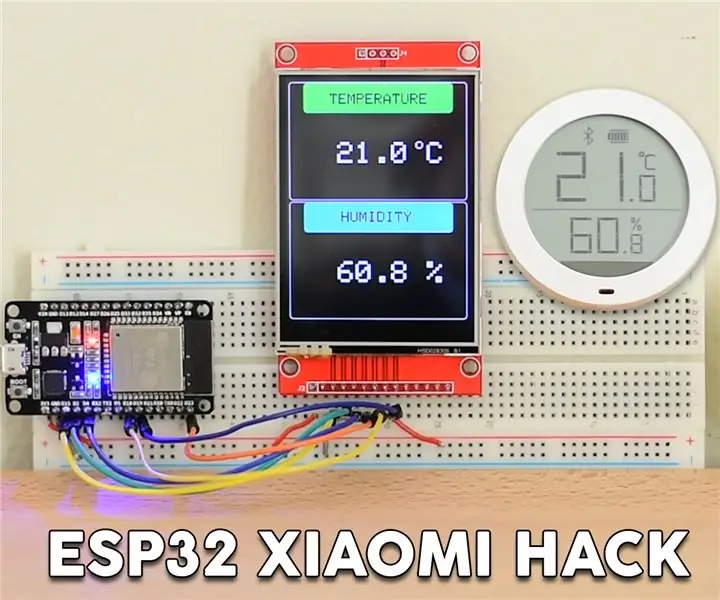
ESP32 Xiaomi Hack - Obtenga datos de forma inalámbrica: ¡Queridos amigos, bienvenidos a otro Instructable! Hoy vamos a aprender cómo obtener los datos que transmite este monitor de Temperatura y Humedad Xiaomi usando la funcionalidad Bluetooth de la placa ESP32. Como puede ver, estoy usando una placa ESP32
Datos meteorológicos con Google Sheets y Google Script: 7 pasos
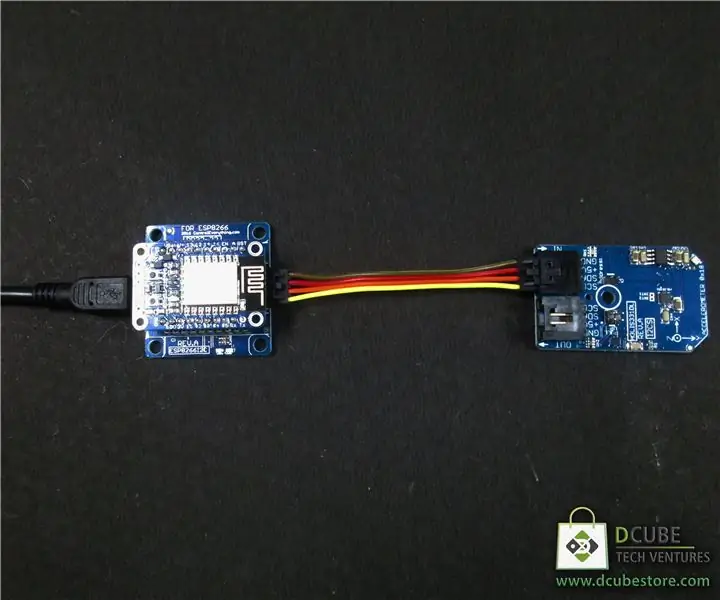
Datos meteorológicos usando Google Sheets y Google Script: En este Blogtut, vamos a enviar las lecturas del sensor SHT25 a Google Sheets usando Adafruit huzzah ESP8266 que ayuda a enviar los datos a Internet. Enviar datos a la celda de la hoja de Google es muy útil y forma básica que guarda los datos en
El registrador de datos de globos meteorológicos de gran altitud definitivo: 9 pasos (con imágenes)
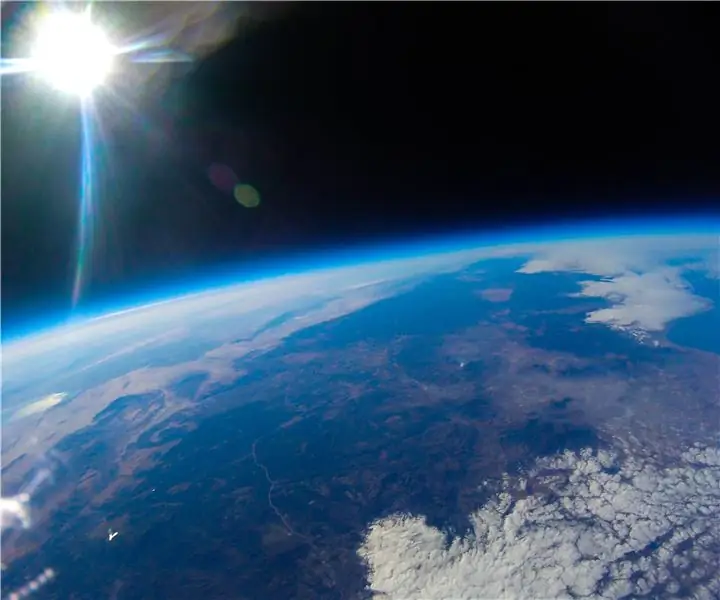
El registrador de datos de globos meteorológicos de gran altitud definitivo: registre datos de globos meteorológicos de gran altitud con el registrador de datos de globos meteorológicos de gran altitud definitivo. Un globo meteorológico de gran altitud, también conocido como globo de gran altitud o HAB, es un globo enorme lleno de helio. Estos globos son una plataforma
Proyecto Arduino: Controle la electrónica a través de Internet utilizando la base de datos y el sitio web Nodejs + SQL: 6 pasos
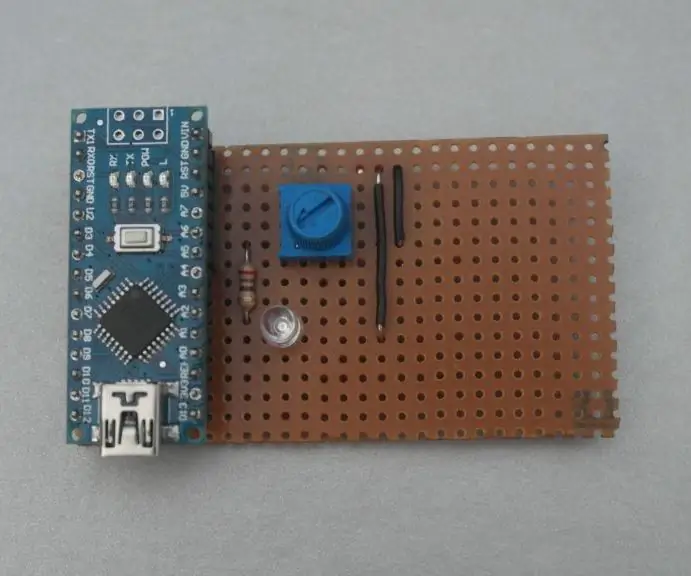
Proyecto Arduino: Control de electrónica a través de Internet usando Nodejs + Base de datos SQL y sitio web .: Proyecto de: Mahmed.tech Fecha de realización: 14 de julio de 2017 Nivel de dificultad: Principiante con algunos conocimientos de programación. Requisito de hardware: - Arduino Uno, Nano, Mega (creo que la mayoría de MCU con conexión en serie funcionarán) - LED único y amp; Res. Límite actual
IoT simplificado: captura de datos meteorológicos remotos: UV y temperatura y humedad del aire: 7 pasos
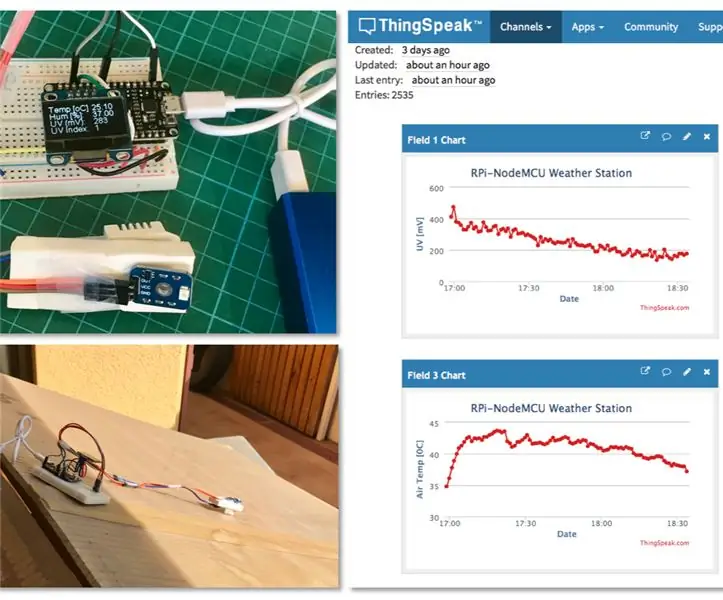
IoT simplificado: captura de datos meteorológicos remotos: UV y temperatura y humedad del aire: en este tutorial, capturaremos datos remotos como UV (radiación ultravioleta), temperatura y humedad del aire. Esos datos serán muy importantes y se utilizarán en una futura estación meteorológica completa. El diagrama de bloques muestra lo que obtendremos al final
